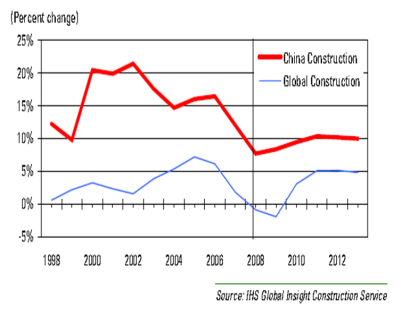Donald J. Trump is all the rage at the moment and his ascendance to the GOP primary frontliner has been a shock for most political observers. It is especially strange because the proposals that he is making like partly closing the Internet or making America great again through the sheer power of personality are transparently absurd and border on pronouncements of a shaman. Almost similarly bizarre and unfulfillable promises come from the Democratic candidate, Bernie Sanders.
In addition to the shamans, there is another irrational current in the primary campaign represented especially by candidates like Ben Carson and Mike Huckabee. These people believe in the justification or perversity of certain social practices by the mere fact that they seem to them to be required or prohibited in their holy book.
While these politicians may seem outliers, they are just somewhat radical versions of the two dominant undercurrents in modern political thinking, leftism and conservatism. One can say that Trump is not exactly conservative because of his economic stances but it is actually an accident of the US political history that many conservatives are more favorable to economic freedom than the left.
One is almost forced to ask how it is possible that in the age of enormous scientific and technological progress in a country to which we owe so much of it people can still have political views that are exploited by the likes of Trump, Sanders, Carson and Huckabee. Why do people not massively embrace the alternative to the respective ideologies of leftism and conservatism, or combinations of the two, the alternative whose even moderate application since the end of the 18th century and till the end of the 19th launched an unprecedented wave of human progress? Why after all what illiberal politicians have done in the 20th century are people not turning to liberalism (in the classical and not modern US sense of the word)?
The answer to this question may lie in the findings of a person who is probably not known to most people nowadays, one of the founders of modern anthropology Branislaw Malinowski, in particular in his essay “Magic Science and Religion”.
In it, Malinowski sets out to explore three fundamental types of thinking as relates to how people should act in the world that often does not simply give them what they want and occasionally bring catastrophes: magic, religion and science. He does it in the context of primitive tribes and he starts by making an important point that even though many people perceive people living in such tribes as completely irrational, they actually have rudiments of science, i.e. the framework of acting in the world based on systematic acquisition of knowledge about the world starting from observation broadly defined:
These natives, and I am speaking mainly of the Melanesians who inhabit the coral atolls to the N.E. of the main island, the Trobriand Archipelago and the adjoining groups, are expert fishermen, industrious manufacturers and traders, but they rely mainly on gardening for their subsistence. With the most rudimentary implements, a pointed digging-stick and a small axe, they are able to raise crops sufficient to maintain a dense population and even yielding a surplus, which in olden days was allowed to rot unconsumed, and which at present is exported to feed plantation hands. The success in their agriculture depends —besides the excellent natural conditions with which they are favored—upon their extensive knowledge of the classes of the soil, of the various cultivated plants, of the mutual adaptation of these two factors, and, last not least, upon their knowledge of the importance of accurate and hard work. They have to select the soil and the seedlings, they have appropriately to fix the times for clearing and burning the scrub, for planting and weeding, for training the vines of the yam-plants. In all this they are guided by a clear knowledge of weather and seasons, plants and pests, soil and tubers, and by a conviction that this knowledge is true and reliable, that it can be counted upon and must be scrupulously obeyed.
[…] Can we regard primitive knowledge, which, as we found, is both empirical and rational, as a rudimentary stage of science, or is it not at all related to it? If by science be understood a body of rules and conceptions, based on experience and derived from it by logical inference, embodied in material achievements and in a fixed form of tradition and carried on by some sort of social organization—then there is no doubt that even the lowest savage communities have the beginnings of science, however rudimentary. Most epistemologists would not, however, be satisfied with such a “minimum definition” of science, for it might apply to the rules of an art or craft as well. They would maintain that the rules of science must be laid down explicitly, open to control by experiment and critique by reason. They must not only be rules of practical behavior, but theoretical laws of knowledge. Even accepting this stricture, however, there is hardly any doubt that many of the principles of savage knowledge are scientific in this sense. The native shipwright knows not only practically of buoyancy, leverage, equilibrium, he has to obey these laws not only on water, but while making the canoe he must have the principles in his mind. He instructs his helpers in them. He gives them the traditional rules, and in a crude and simple manner, using his hands, pieces of wood, and a limited technical vocabulary, he explains some general laws of hydrodynamics and equilibrium. Science is not detached from the craft, that is certainly true, it is only a means to an end, it is crude, rudimentary, and inchoate, but with all that it is the matrix from which the higher developments must have sprung.
However, alongside what may be called science, there exist two more frameworks that, at first sight, are difficult to distinguish clearly but are actually, as Malinowski brilliantly demonstrates quite different. These frameworks are magic and religion. The difference between the two is that a magician strives to directly influence what happens in the world, although there is no explanation whatsoever how this is supposed to work:
Compare a rite carried out to prevent death in childbed with another typical custom, a ceremony in celebration of a birth. The first rite is carried out as a means to an end, it has a definite practical purpose which is known to all who practice it and can be easily elicited from any native informant. The post-natal ceremony, say a presentation of a new-born or a feast of rejoicing in the event, has no purpose: it is not a means to an end but an end in itself.
Religion is also a response to the imperfection of the world but from a different angle. Where magic strives to militate against things that cannot be changed either in principle or with application of the existing knowledge or technology, the essence of religion is to find certain elements of the world that would give consolation in the face of its clear imperfection. The most important such elements in probably all religions are the tradition and the human mind that is considered as an immaterial spirit.
In order to grasp better the nature of primitive religious ceremonies and their function, let us analyze the ceremonies of initiation. They present right through the vast range of their occurrence certain striking similarities. Thus the novices have to undergo a more or less protracted period of seclusion and preparation. Then comes initiation proper, in which the youth, passing through a series of ordeals, is finally submitted to an act of bodily mutilation: at the mildest, a slight incision or the knocking out of a tooth; or, more severe, circumcision; or, really cruel and dangerous, an operation such as the sub-incision practised in some Australian tribes. The ordeal is usually associated with the idea of the death and rebirth of the initiated one, which is sometimes enacted in a mimetic performance. But besides the ordeal, less conspicuous and dramatic, but in reality more important, is the second main aspect of initiation: the systematic instruction of the youth in sacred myth and tradition, the gradual unveiling of tribal mysteries and the exhibition of sacred objects.
[…] We may, therefore, lay down the main function of initiation ceremonies: they are a ritual and dramatic expression of the supreme power and value of tradition in primitive societies; they also serve to impress this power and value upon the minds of each generation, and they are at the same time an extremely efficient means of transmitting tribal lore, of insuring continuity in tradition and of maintaining tribal cohesion.”
[…] To primitive man, never, even under the best conditions, quite free from the threat of starvation, abundance of food is a primary condition of normal life. It means the possibility of looking beyond the daily worries, of paying more attention to the remoter, spiritual aspects of civilization. If we thus consider that food is the main link between man and his surroundings, that by receiving it he feels the forces of destiny and providence, we can see the cultural, nay, biological importance of primitive religion in the sacralization of food. We can see in it the germs of what in higher types of religion will develop into the feeling of dependence upon Providence, of gratitude, and of confidence in it.
[…] Thus the belief in immortality is the result of a deep emotional revelation, standardized by religion, rather than a primitive philosophic doctrine. Man’s conviction of continued life is one of the supreme gifts of religion, which judges and selects the better of the two alternatives suggested by self-preservation—the hope of continued life and the fear of annihilation. The belief in spirits is the result of the belief in immortality. The substance of which the spirits are made is the full-blooded passion and desire for life, rather than the shadowy stuff which haunts his dreams and illusions. Religion saves man from a surrender to death and destruction, and in doing this it merely makes use of the observations of dreams, shadows, and visions. The real nucleus of animism lies in the deepest emotional fact of human nature, the desire for life.
At the first sight, the connection between Malinowski’s observations about primitive tribes and politics in modern highly complex and developed societies may seem tenuous at best but when one looks closer at the essence of the three main political ideologies of today, it becomes difficult not to see magic, science and religion embodied in them.
Let us start with leftism. It is obvious that all kinds of people on the left believe with varying degrees of confidence in the possibility for the human societies led by technocrats restricted by democracy to manipulate social outcomes. From the very beginning, leftism was an attempt to address the social problems in a manner similar to that of natural science. Despite the lip service that is paid to science, however, the approach of the left seems to have much more to do with magic, however, because of two key things.
First, much of the left’s belief in the benefits of deliberate (whether top-down or democratic) meddling with spontaneous social order is based on disregard or willful misinterpretation of important historic facts. One major line of such misjudgment consists in widespread claims that many kinds of social problems were worsening or at least not improving during the short relatively ‘laissez-faire’ phase in Western history. According to this story, consumers were robbed by monopolies and sold junk and dangerous stuff, workers were mercilessly exploited, there was little or no education for most people, the list could go on indefinitely. A cursory look at the relevant historical facts will show to anyone who wants to see that those beliefs are blatant myths.
In addition, while the left has often emphasized the need to scientifically rearrange society and social democrats are fond of reminding us that they are ideology-neutral people who are just looking at where carefully collected evidence collected by social research leads them, there is a big problem with much of that research. The problem is that it is overwhelmingly dominated by methods taken in one way or another, and with different degrees of modification, from natural sciences and engineering. This process went so far that, for instance, finance specialists apply Fourier transforms (a method from electrical engineering) to analyzing the evolution of financial market indices. It has strong similarities with the famous “cargo cults” with figures of planes replaced by misused mathematical and computational instruments.
At the same time, a large part of the modern left seems to be completely at odds with the optimism of the Progressive movement. Post-modernists that largely drive this line of thinking generally reject the objectivity of science (whether natural or social) wholesale, attempting to reduce all kinds of social interactions to exercises of power. The difference with the technocratic left, however, is ultimately not a one of principle. A cargo-cult-like, pseudoscientific mysticism is replaced by a strong belief that prima facie harmless acts like jokes or market exchanges are actually exercises of great social power. By trying to control them, the postmodernist left seeks to manage society in no-less direct way than their technocratic brethren, and the foundation of their ideas is every bit as similar to magic.
The second major strand in human political thinking – conservatism – corresponds to a different major mode of thinking analyzed by Malinowski – religion. The affinity goes beyond the very close relationship between conservatism and religion in almost every instance. Conservatism always tries to sacralize certain features of society, especially hierarchies and social roles and is suspicious of any changes that may even remotely threaten them. It sometimes tries to rationalize those features but such attempts are usually half-hearted and deeply unconvincing, often boiling down to the idea that although we cannot know why a given social feature has not been weeded out over a long period, it must be beneficial for this very reason.
It is also frequently talks about so-called ‘transcendent’ entities and values mirroring the fascination of the primitive cultures with the idea of life and rebirth cycle. The language of patriotism, for example, almost makes one feel that even if one dies defending the transcendent Fatherland one will sort of continue living because one was always part of it, and it is still there. In a similar vein, conservative cultures encourage affection and sacrifice based on blood relations.
Leftism and conservatism, thus, respond to the imperfections of the social world like magicians and priests. The only ideology that argues that the imperfections of the social world should be addressed in keeping with the basic knowledge about human beings and society is liberalism. Liberals realize that human beings’ ability to learn, knowledge and good character traits are highly limited but decentralized mechanisms of cooperation and exchange actually allow to put them to use while keeping the human dark side in check. Faced with grandiose schemes of social design from above, it always asks the annoying questions about the possibility of the actually existing humans and institutions to achieve the goals of such schemes and such schemes’ unintended consequences. At the same time, liberals do not accept the claims that certain social institutions an practices or their absence are valuable or to be prevented for their own sake, which puts them sharply at odds with conservatives.
The answer to the question why liberalism has so far had such a difficulty in winning in the political realm is that its adversaries correspond to two other fundamental modes of human thinking about the imperfect world. But the fact that science has won out in most other important realms should be the reason for hope.








